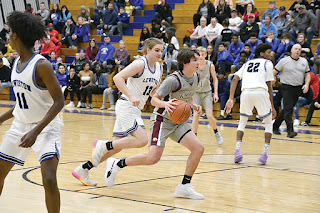By Bob Chapin
When my hunting partner and I began discussing a black bear hunt we wanted to take the following spring (Alaska has a spring bear hunt) to our surprise our wives overheard us and said they would like to come along. This was especially incredulous to Burt and I since we had made this exact hunt the year before with two other guys and it was a disaster. Six solid days of monsoon-type rains that wet all of our clothes, our sleeping bags, and our food supply despite having a “waterproof” tent. We didn’t see the girls being that happy, but if they were willing who were we to question them.
We all flew in on a DeHaviland Beaver, the workhorse of the north, out of Homer, Alaska, on a beautiful sunshiny day, and it stayed like that for a week. Maybe the girls were a good luck charm. We ferried our gear from the float plane to the shore and said goodbye to the pilot that we would not see for a week. As it was a no hunting day (you can’t fly and hunt on the same day in AK to preclude people spotting game from the air and landing and shooting it) we set up camp. After setting up camp on a level spot back in the trees we set about exploring the area for bear sign. We were on a long peninsula that jutted out into Dogfish Bay on Prince William Sound. It was about a mile long and a half mile wide and it allowed us an unencumbered view back toward several hillsides that terminated at the water and rose several thousand feet to the snow line. When the bears come out of hibernation, they often push a lot of dirt out of the cave they spent the winter in making a distinctive “aluvial fan” on the snow below the hole. We looked hard for any of those that might be on the hills but saw none. We spent the next several days with binoculars and spotting scopes scouring the hillsides. Finally, on the fourth day we spotted a bear. We watched that bear for over an hour trying to determine what direction it was moving so that we might intercept it. It was not moving very fast, apparently finding something to eat in the greenery that followed the snow line as it receded up the mountain on those long sunny days. We finally made our move.
We left the girls with instructions to let us know if the bear moved and started across the bay separating us from the near shore. The tide had gone out and we could simply walk across the bay except for a narrow stream which we would have to ford. We took off our boots and started across in bare feet. We weren’t three steps into this process before we saw the stupidity of it. That water was so cold we couldn’t feel our feet after a half dozen steps. We ran the rest of the way across and fell down on a dry spot to rub life back into our toes. Once we made the tree line things didn’t improve. It was carpeted with thick alders and a thing called Devil’s Club, a 6-foot stalk with nothing but prickers on it. Fortunately, there was a ridge of pine trees that rose almost to the top of the hill and we found easy, quiet footing in the pine duff and ascended quickly.
When we had climbed to a point where we thought we should see the bear we took a break. Burt sat down and I stood as best I could as the terrain was extremely steep. We hadn’t been there 30 seconds when we heard a loud Whoof and crashing branches directly above us. The bear was only about 10 paces away and coming fast downhill. Burt, who had first shooter rights, was popping his head up and down like a gopher looking into his scope and then over the top of it. I said, “Burt, shoot, shoot!” But I heard nothing so the next instant I fired as the bear was only five feet away. I heard him fire shortly afterward and the bear veered off to my left and went down the hill past us. The hill was so steep we could not see where the bear went below us. <
…To Be Continued









